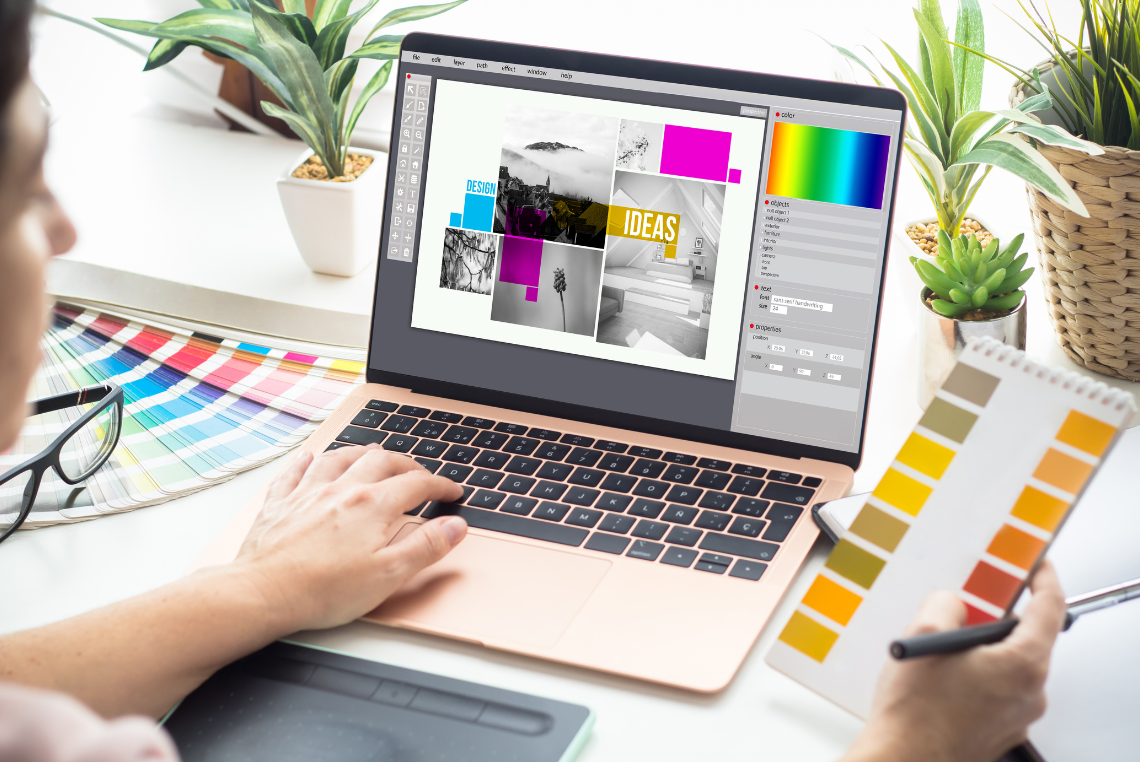- +91 22 23526372
- kgc@karangupta.com

Becoming a graphic designer in 2025 offers a fulfilling career path where creativity merges with technology to convey messages visually. This detailed guide provides a comprehensive roadmap, covering essential steps, skills, qualifications, career paths, earning potential, and additional insights into the field of graphic design.
Graphic designers are visual communicators who create impactful designs using elements like images, typography, and layout. They work across various mediums, including print, digital platforms, and multimedia, to craft visuals for logos, websites, advertisements, packaging, and more. Their role involves interpreting client briefs, conceptualizing ideas, and utilizing design software to bring concepts to life effectively and creatively.
Successful graphic designers possess a diverse set of skills that combine creativity with technical proficiency:
Willingness to Try Creative Alternatives: Eagerness to experiment and explore new design approaches and techniques.
To pursue a career as a graphic designer, consider the following qualifications and credentials:
Graphic designers can explore diverse career opportunities across various industries:
Start by mastering the fundamental principles of graphic design, including composition, balance, contrast, and visual hierarchy. Study design theory and analyze successful design examples across various mediums.
Consider enrolling in a structured graphic design program or online course that covers design fundamentals, software training, and hands-on projects. Look for courses that offer mentorship, industry insights, and opportunities for portfolio development. Explore options like graphic designer courses, graphic design courses online, and how to become a graphic designer after 12th to find the best fit for your career path.
Gain proficiency in essential graphic design software such as Adobe Photoshop for image editing, Adobe Illustrator for vector graphics, and Adobe InDesign for layout design. Explore advanced features, shortcuts, and techniques to streamline your workflow and enhance design capabilities.
Practice is crucial in graphic design. Initiate personal projects, participate in design challenges, or collaborate with peers to apply your skills and experiment with different styles and concepts. Focus on building a diverse portfolio that showcases your creativity and technical expertise.
Compile a comprehensive portfolio that highlights your best design projects, demonstrating your ability to solve design problems, innovate, and deliver visually compelling solutions. Tailor your portfolio to showcase versatility across different design mediums and industries.
The salary of a graphic designer varies based on factors such as experience, location, industry, and specialization. In India, entry-level graphic designers typically earn between ₹3,00,000 to ₹6,00,000 per annum, with senior designers and those in specialized roles commanding higher salaries.
The job outlook for graphic designers remains positive, driven by the growing demand for visual content in digital marketing, advertising, and brand communication. Design skills continue to be valued in industries embracing digital transformation and user-centered design principles.
Yes, you can pursue a career in graphic design after completing your 12th standard. Consider enrolling in a bachelor's degree program in graphic design or a related field to acquire foundational skills and embark on a career in design.
Yes, online graphic design courses can be highly effective, offering flexibility and accessibility for learning design theory, software skills, and industry practices. Look for accredited courses that provide practical projects and opportunities to build a professional portfolio.
A portfolio is essential for showcasing your skills, creativity, and design capabilities to potential employers or clients. It serves as a visual resume that demonstrates your proficiency, style, and ability to meet design challenges effectively.
Key graphic design tools include Adobe Photoshop for image editing, Adobe Illustrator for vector graphics and illustrations, Adobe InDesign for layout design, and tools like Sketch or Figma for UI/UX design. Familiarize yourself with these tools to enhance your design proficiency and versatility.
Graphic designers can pursue diverse career paths across industries such as advertising, digital marketing, publishing, corporate design, freelance, motion graphics, and UI/UX design. The versatility of skills allows for specialization and growth in areas aligned with personal interests and career goals.
